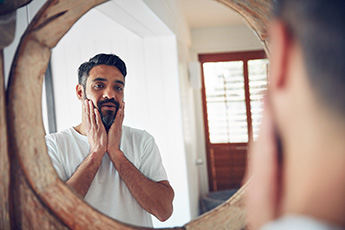Imagine writing a check to the contractor who is renovating your apartment, only to later discover that someone else cashed the check — and got $7.5K out of your account. That’s exactly what happened to New York television producer Matt Schick, who rarely ever used checks to begin with. He wrote out a check to pay his electrician and dropped it in the mailbox outside the studio where he works. Two days later, it was cashed — but to the wrong person, in the wrong amount. All it took was one check falling into the wrong hands for him to become a victim of check washing.With the multitude of clever digital scams in the world, you might think that all the criminals have abandoned pen-and-ink fraud for computer-aided theft. Unfortunately, you would be incorrect. Certainly, the number of digital scams has increased over the past several years and the number of checks written has gone down. According to a study done by the Federal Reserve, the number of checks written by consumers, businesses, and government entities dropped by 7.2% a year from 2018 to 2021, to a total of 11.2B. However, the average payment made by check increased during the same period, from $1,908 in 2018 to $2,430 in 2021. The latter year saw a total of $27.23T in check payments, an amount equivalent to about 21% of all the noncash payments.A Blank Check for CriminalsCriminals are happy to take advantage of checks both large and small through a scam called check washing. Thieves either steal mail directly from business and residential mailboxes or go “fishing,” using strings coated in a sticky substance to lift envelopes from public mailboxes, then returning or discarding envelopes that don’t appear to contain checks. They use chemical solvents to remove the payee’s name and/or the payment amount, replacing those fields with their own names and cashing the checks. One New York woman wrote a check for $656 to pay off a credit card balance. A stranger stole it, rewrote the payee’s name and amount, and cashed the check for $9K. All told, check washing costs US consumers, businesses, and financial institutions $815MM a year. For businesses, the cost can amount to 1.5% of their revenue.Some check washers take the scam one step further and use information gathered from checks and bills to steal senders’ identities, take out loans in their names, produce counterfeit checks, or create fake identification cards and passports. How To Coach Your CustomersCommunity financial institutions (CFIs) can’t directly prevent check washing, but they can counsel their business and retail customers on how to avoid it. The following are ways that CFIs can directly help their business customers and individual consumers reduce the risk of check washing and other types of check fraud:
- Digital payments. Encourage customers to use digital payments wherever they can, whether that’s through PayPal, Venmo, Zelle, or another digital wallet or payment method. No one can wash a check when there’s no check to wash.
- Automated payments. Instead of writing checks for recurring or one-time payments, customers can also use ACH and automatic bill pay.
- Mobile banking. Offer a mobile banking app and remind customers to use it to monitor account activity. This helps customers ensure that the checks written are cashed for the right amount by the correct person or business.
- Offer stolen check protection. While not a way to prevent check washing, offering this extra service to customers can help build trust with customers. It’s likely worth a small fee to most businesses if they know that you have their back if a check goes missing or is cashed in the wrong amount or by the wrong entity.
- Positive pay. When businesses send out checks using positive pay, your team receives details such as the account number, amount, and check number so that you can confirm it’s being deposited or cashed appropriately, or flag a potential fraudulent transaction.
- Security features and check verification. Checks can be produced with advanced features like microprinting and watermarks that make them harder to counterfeit.
There are also tactics that customers can implement themselves to avoid check washing. The following are tips that CFIs can give their customers that may save them a whole lot of trouble later:
- Deposit checks promptly. Follow up with recipients who haven’t cashed the checks you issued them within a reasonable time frame.
- Write in black ink only. Use permanent black gel pens to write a check. Black gel ink saturates the paper fibers of the check, making it more difficult to remove.
- Pay to the order of a person or business. Make out checks to specific businesses and people, not to “cash.” Don’t leave blank space in the lines for payee or payment amount.
- Secure checks. Store unused checks in a secure spot.
- Never leave outgoing mail exposed. Don’t leave outgoing mail unattended in a business or residential mailbox. A public mailbox is better, but handing mail directly to a mail carrier or bringing it to the post office is best.
- Schedule mail pickups. Businesses that have a lot of outgoing mail might find it’s more secure to have the postal worker come to pick up mail at a designated time. Getting to know your mail carrier and having an idea of when to expect them can help a customer more easily identify if a criminal is posing as a postal worker.
- Bring delivered mail in daily. It’s not a good idea to let delivered mail sit in an unsecured mailbox overnight. If this isn’t possible, customers should consider renting a post office box where the mail is secure until they retrieve it. If they leave town, they can ask the postal service to hold the mail.
- Take advantage of informed delivery. Use the postal service’s informed delivery function to ensure that the mail received is actually delivered.
- Be prompt with unfamiliar charges. Encourage customers to contact you right away if they see an unfamiliar item on their monthly bank statement.
- Dispose of deposited or canceled checks. After 30 days, shred or burn canceled checks, checks deposited through the mobile app, credit card statements, and bills.
While digital payments are becoming more popular, checks still play a crucial role in many transactions, making them a prime target for check washing scams. Though CFIs can't completely prevent this fraud, they can help protect customers by offering practical advice. Encouraging the use of digital payments, secure mail handling, and vigilant account monitoring are key ways to reduce risk. By educating customers and providing solutions, CFIs not only safeguard their clients but also build stronger relationships based on trust and security.




